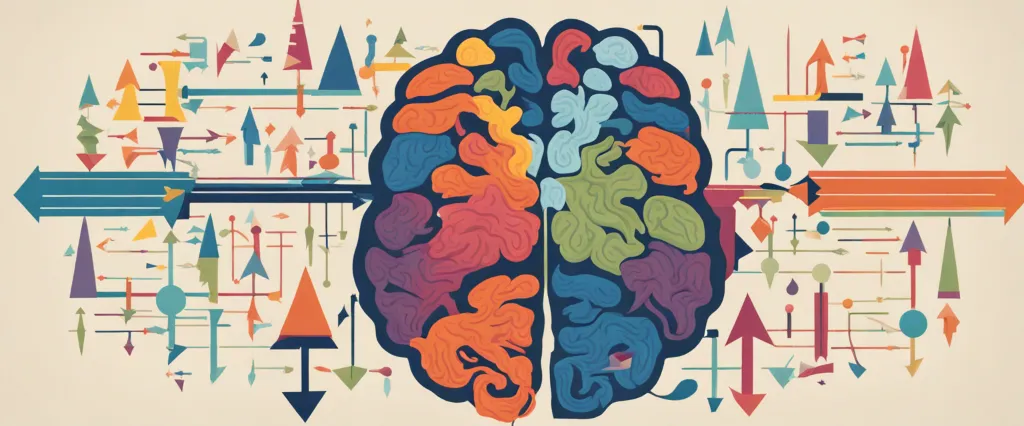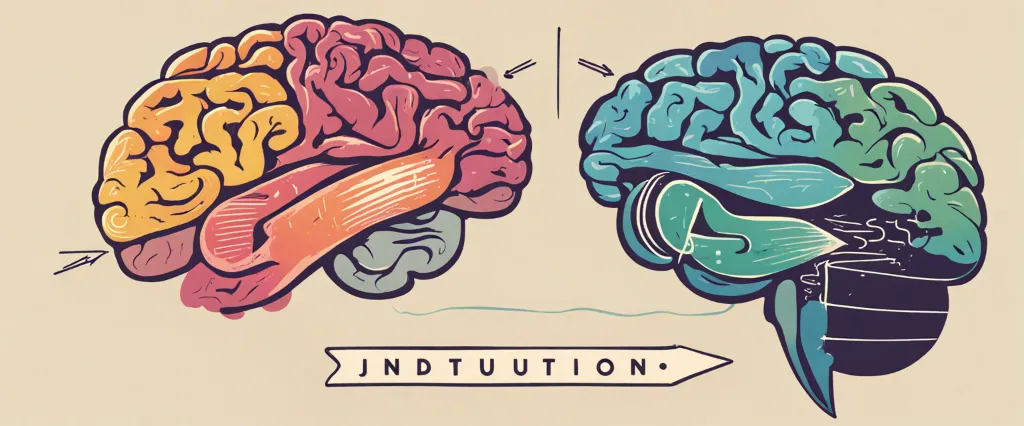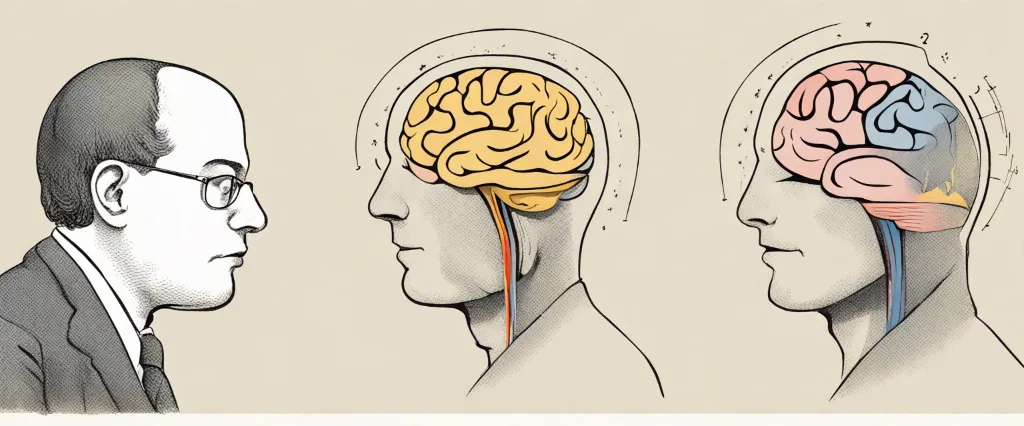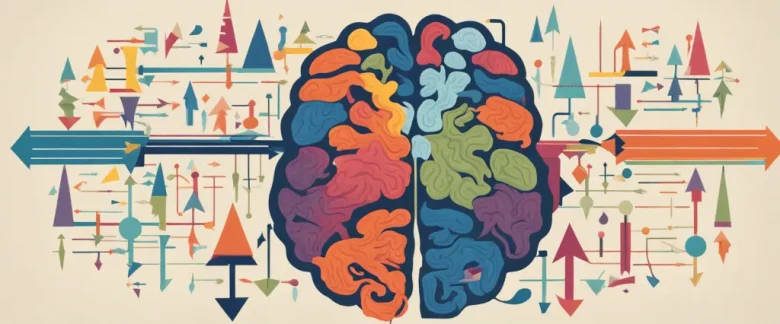
In “Brain Rules,” John Medina explores the fascinating world of neuroscience and its profound implications for our everyday lives. With a captivating blend of scientific research, real-life anecdotes, and practical advice, Medina reveals how our brains function and offers valuable insights into how we can optimize our cognitive abilities. Drawing from his extensive background as a developmental molecular biologist, professor, and renowned speaker, Medina breaks down complex scientific concepts into digestible information that is accessible to all readers. Throughout the book, he shares his profound passion for understanding the inner workings of the human brain, making “Brain Rules” an enlightening and transformative journey into the depths of our most vital organ.
Chapter 1: Exercise and the Brain
Chapter 1 of “Brain Rules” by John Medina explores the relationship between exercise and the brain. The author emphasizes the significance of regular physical activity for optimal brain function and highlights the detrimental effects of a sedentary lifestyle.
Medina begins by explaining that the brain is not designed for a sedentary lifestyle that most people live today. Our ancestors were physically active, constantly moving and hunting, which helped their brains evolve and develop in favorable conditions. However, the modern work environment, with its desk jobs and lack of physical activity, is detrimental to brain health and cognitive abilities.
Physical exercise has been shown to improve cognitive performance, learning, and memory. Medina cites research studies that demonstrate how even a simple walk or light workout can enhance brain function. Exercise increases blood flow to the brain, delivering more oxygen and nutrients while removing waste products. This boost in blood circulation stimulates the production of new brain cells in the hippocampus, a crucial region responsible for memory formation.
The chapter also explores the effects of exercise on attention span and focus. Medina discusses how physical activity triggers the release of various neurotransmitters, including dopamine and norepinephrine, which enhance alertness and attention. Exercise also helps regulate stress, anxiety, and depression, reducing their negative impact on cognitive abilities.
Furthermore, the author emphasizes the importance of physical education in schools, arguing that exercise should be incorporated into the curriculum to support children’s brain development. He provides examples of schools that have implemented exercise programs, leading to improved academic performance and behavioral outcomes for students.
In conclusion, Chapter 1 of “Brain Rules” highlights the vital role of exercise in optimizing brain function. Regular physical activity not only improves cognitive abilities, learning, and memory, but also enhances attention, reduces stress, and supports overall brain health. The chapter calls for a shift towards a more active lifestyle and the inclusion of exercise in education to unlock the full potential of our brains.
Chapter 2: Sleep and the Brain
Chapter 2 of “Brain Rules” by John Medina is titled “Sleep and the Brain” and explores the importance of sleep for brain function and overall health. The chapter begins by highlighting the prevalent sleep deprivation in modern society and identifies it as a significant public health concern.
Medina emphasizes that sleep is not a luxury but a necessity for the brain to function optimally. He discusses the two major types of sleep: non-rapid eye movement (NREM) and rapid eye movement (REM) sleep. NREM sleep is crucial for memory consolidation, learning, and problem-solving, while REM sleep is associated with emotional regulation and creativity.
The author explains the concept of the sleep cycle, composed of several NREM and REM sleep stages. He emphasizes the importance of completing multiple cycles to benefit brain health and suggests that adults need seven to nine hours of sleep each night, while teenagers need about nine hours.
Medina addresses common misconceptions about sleep and debunks the myths that humans can adapt to less sleep or catch up on sleep during weekends. He provides evidence showing that these practices lead to negative consequences on cognition, memory, and overall health.
The chapter also discusses the impact of sleep disorders on brain function, such as sleep apnea and insomnia. Medina highlights how these disorders can impair attention, increase the risk of mental health issues, and contribute to chronic conditions like obesity and cardiovascular diseases.
In conclusion, the chapter emphasizes the crucial role of sleep in brain function and overall well-being. It encourages readers to prioritize sleep, debunking common myths, and providing evidence-based recommendations for achieving optimal sleep quality and duration.
Chapter 3: Stress and the Brain
Chapter 3 of “Brain Rules” by John Medina is titled “Stress and the Brain,” and it focuses on the impact of stress on the brain’s functioning and overall health. The chapter explores how stress affects our cognitive abilities, memory, and learning, while also discussing potential ways to manage and reduce stress.
Medina begins by highlighting how stress, particularly chronic stress, can impair cognitive abilities such as attention, working memory, problem-solving, and creative thinking. Chronic stress can also lead to shrinkage in the prefrontal cortex, the part of the brain responsible for executive functions like decision-making and emotional regulation. Furthermore, stress activates the amygdala, which can enhance the encoding of emotional memories but impairs our ability to remember factual information.
Stress also affects learning, as prolonged and intense stress disrupts the brain’s hippocampus, a region crucial for forming and recalling memories. Medina emphasizes that stress hormones, such as cortisol, can have damaging effects on the hippocampus by reducing the birth of new neurons, inhibiting the production of neural connections, and hindering the communication between brain cells.
To manage and reduce stress, Medina suggests a variety of strategies. These include regular exercise, which reduces stress hormones and increases the production of endorphins, as well as sufficient sleep, which helps regulate cortisol levels. He also emphasizes the importance of positive social connections, as the release of oxytocin can counteract the negative effects of stress. Mindfulness meditation and other relaxation techniques are also recommended to regulate stress responses and improve overall well-being.
In conclusion, Chapter 3 of “Brain Rules” underscores the detrimental impact of stress on various aspects of brain function. By understanding the effects of stress and implementing strategies to manage it, individuals can enhance their cognitive abilities, memory, and learning capabilities, ultimately leading to improved overall brain health.
Chapter 4: Attention and the Brain

Chapter 4 of “Brain Rules” by John Medina explores the concept of attention and its relationship with the brain. The chapter emphasizes how attention is crucial for learning and memory and provides insights into how the brain processes and retains information.
Medina starts by debunking the myth of multitasking, stating that the brain cannot truly focus on more than one task at a time. Instead, it rapidly switches between tasks, which can result in decreased efficiency and increased errors. He argues that attention is the key to effective learning as it allows information to reach the brain’s memory systems.
The chapter then delves into the brain’s attentional network, which consists of three major components: orienting, alerting, and executive attention. Orienting involves directing attention towards specific stimuli, alerting is the ability to sustain attention over time, and executive attention involves focused and flexible attention.
Medina highlights the importance of visual stimuli in grabbing our attention due to the brain’s evolutionary tendency to prioritize visual information. It is easier for the brain to process and remember visual details as compared to verbal or written information alone. He suggests incorporating visuals, such as pictures or diagrams, to enhance learning and capture attention.
Furthermore, the chapter explores the impact of stress on attention and memory. High-stress levels can impair attentional processes, making it difficult to concentrate and learn effectively. Medina recommends creating low-stress learning environments to optimize attention and retention.
In conclusion, Chapter 4 of “Brain Rules” emphasizes the significance of attention for effective learning and memory formation. By understanding the brain’s attentional network and incorporating visuals, educators and individuals can enhance attention, optimize learning, and improve overall cognitive performance.
Chapter 5: Memory and the Brain
Chapter 5 of “Brain Rules” by John Medina delves into the intricate relationship between memory and the brain. Medina explores how memories are formed, organized, and retrieved.
The chapter begins by discussing the concept of working memory, which refers to the brain’s ability to hold and manipulate information in the short term. Medina explains that working memory is limited and can typically store around four different elements at a time. This limitation has significant implications in educational settings, as educators need to be mindful of cognitive overload and the importance of focusing on essential information.
The author then introduces the concept of long-term memory, divided into two categories: declarative and procedural memory. Declarative memory encompasses factual information that can be consciously recalled, while procedural memory involves the acquisition of skills and habits. Medina highlights the vital role of the hippocampus in transferring information from working memory to long-term memory.
Importantly, Medina emphasizes the significance of repetition and spacing when it comes to memory retention. He explains that repeated exposure and distributed practice enhance the chances of transferring information effectively into long-term memory. Moreover, emotions play a crucial role in memory formation, as strong emotional experiences tend to have a lasting impact on memory recall.
The chapter also explores the influence of sleep on memory consolidation. Medina emphasizes the importance of quality sleep in strengthening memory and the negative effects of sleep deprivation on cognitive function.
Ultimately, Chapter 5 of “Brain Rules” provides a comprehensive overview of the mechanisms behind memory formation and retention. It emphasizes the significance of working memory, the role of the hippocampus, the importance of repetition and emotional connections, and the impact of sleep on memory consolidation.
Chapter 6: Sensory Perception and the Brain
Chapter 6 of the book “Brain Rules” by John Medina is titled “Sensory Perception and the Brain.” In this chapter, Medina explores how our brain processes and interprets various sensory inputs, such as vision, hearing, touch, taste, and smell.
Medina begins by highlighting the importance of vision, discussing how the brain dedicates a significant amount of its resources to processing visual information. He explains the complexity of this process, involving the retina, optic nerve, and visual cortex, and emphasizes the brain’s reliance on visual representations.
Moving on to the sense of hearing, Medina explains how the auditory system works, from capturing sound waves to interpreting them as meaningful information. He also explores the significance of music and its impact on brain development, memory, and emotional well-being.
The author then delves into touch and its role in our sensory perception. He explains the various types of touch receptors in the skin and discusses recent research on the therapeutic benefits of touch, such as reducing stress and improving social bonding.
Next, Medina explores the senses of taste and smell, highlighting their strong connection and the influence they have on memory and emotions. He provides insights into the brain regions responsible for these senses and their intricate relationship with memory formation and recall.
Throughout the chapter, Medina also includes real-life examples, anecdotes, and research studies to illustrate and support his explanations. He emphasizes the importance of understanding how our brain processes sensory information as it helps us better comprehend learning and memory, as well as explore potential applications in fields like education, healthcare, and design.
Overall, Chapter 6 of “Brain Rules” provides a comprehensive overview of how our brain perceives and makes sense of the world through our senses, highlighting the intricate processes and the significance of each sensory system in influencing our thoughts, emotions, and behavior.
Chapter 7: Emotions and the Brain
Chapter 7: Emotions and the Brain of the book “Brain Rules” by John Medina explores the intricate relationship between emotions and the human brain. The chapter highlights the significant impact emotions have on overall cognitive function and decision-making processes.
Medina discusses how emotions are deeply entwined with memory formation. He explains that the amygdala, a small and crucial region of the brain, plays a pivotal role in emotional experiences. The amygdala helps to encode emotional memories, making them more vivid and easier to recall. This phenomenon elucidates why emotionally charged events tend to have a long-lasting impact on our memory.
The author emphasizes the power of emotional engagement in learning. He argues that when emotions are involved, learning becomes more effective and memories are better retained. Medina provides examples of how educators and trainers can harness this principle to enhance instructional techniques and create meaningful learning experiences.
Furthermore, Medina delves into the concept of stress and its profound effects on cognitive function. He explains how chronic stress can impair learning and memory, while acute stress can enhance certain cognitive abilities temporarily. Understanding these dynamics allows individuals to manage stress more effectively and optimize their cognitive performance.
Lastly, the chapter relates emotions to decision-making processes, outlining how emotions can influence choices and judgments. Medina emphasizes that emotions and reason are not adversaries; rather, they work together in decision-making. Emotions provide valuable information and context that help individuals make well-informed decisions.
In conclusion, Chapter 7 of “Brain Rules” demonstrates how emotions are intricately intertwined with brain function. It explores the impact of emotions on memory formation, the importance of emotional engagement in learning, the effects of stress on cognition, and the role of emotions in decision-making. By understanding these intricate connections, individuals can harness the power of emotions to enhance their cognitive abilities and make more informed choices.

Chapter 8: Learning and the Brain
Chapter 8 of “Brain Rules” by John Medina focuses on learning and the brain. The chapter delves into how our brains are wired to learn and provides insights into techniques and strategies that can optimize the learning experience.
The chapter starts by emphasizing that our brains are natural learning machines, constantly seeking new information and making connections. Medina explains that the brain’s ability to learn is influenced by various factors, such as attention, memory, and the ability to extract meaning from information.
Medina highlights the importance of attention in learning and explains that our brains have limited attentional resources. He discusses the impact of multitasking on learning, stating that while we may think we can efficiently handle multiple tasks simultaneously, our brains are not designed for it. Medina suggests that focusing on one task at a time is more effective for learning and retaining information.
The chapter also explores the role of memory in learning. Medina explains the two types of memory: working memory and long-term memory. Working memory, which has limited capacity, enables us to temporarily hold and manipulate information. Long-term memory, on the other hand, stores information for later retrieval. Medina provides techniques for enhancing memory, such as “chunking” information into meaningful groups and utilizing visual imagery.
Furthermore, the chapter discusses how emotions impact learning. Medina explains that positive emotions enhance learning, while negative emotions can hinder it. He suggests creating a positive learning environment that promotes engagement and curiosity to optimize the learning process.
Lastly, the chapter explores the impact of stress on learning. Medina explains that chronic stress can impair memory and cognitive functions, such as attention and problem-solving. He provides strategies to reduce stress and create a conducive learning environment.
In summary, Chapter 8 of “Brain Rules” highlights the essential elements of learning, including attention, memory, emotions, and stress. By understanding how the brain learns, we can adopt effective strategies and techniques that optimize the learning experience, leading to better retention and understanding of information.
After Reading
In conclusion, John Medina’s book “Brain Rules” provides a captivating exploration of how our brain works and what we can do to optimize its function. Through engaging storytelling, scientific studies, and practical advice, Medina highlights the key principles behind improving our memory, attention, and overall cognitive abilities. By following the “brain rules,” which include concepts such as exercise, sleep, and the importance of stress management, readers can enhance their mental performance and lead healthier, more productive lives. “Brain Rules” is an invaluable resource for anyone eager to unlock the secrets of the brain and harness its full potential.
1. “Your Brain On Porn” by Gary Wilson: This book offers a thought-provoking exploration of the effects of pornography on the brain, relationships, and overall well-being. With insightful research and personal stories, Wilson sheds light on the neuroscience behind addiction and provides practical strategies for overcoming it.
2. Hidden Valley Road” by Robert Kolker: This gripping true story delves into the lives of the Galvin family, who grappled with the effects of schizophrenia. Kolker compassionately examines the impact on each family member, while shedding light on the complex nature of mental illness and the strides made in understanding and treating it.
3. Quiet: The Power of Introverts in a World That Can’t Stop Talking” by Susan Cain: If you’ve ever felt misunderstood or overlooked as an introvert, this empowering book is a must-read. Cain explores the value of introversion in a world that often favors extroverted qualities. Drawing on research, real-life examples, and personal anecdotes, she advocates for the power of introversion and provides practical advice for navigating social settings and embracing one’s own unique strengths.
4. The Immortal Life of Henrietta Lacks” by Rebecca Skloot: Combining science, ethics, and a remarkable story, this non-fiction work sheds light on Henrietta Lacks, an African American woman whose cancer cells were taken without her knowledge in the 1950s. These cells, known as HeLa cells, became instrumental in scientific breakthroughs and medical advancements. Skloot skillfully explores the impact on Henrietta’s family, while raising important questions about medical ethics, racial disparities, and our evolving understanding of informed consent.



